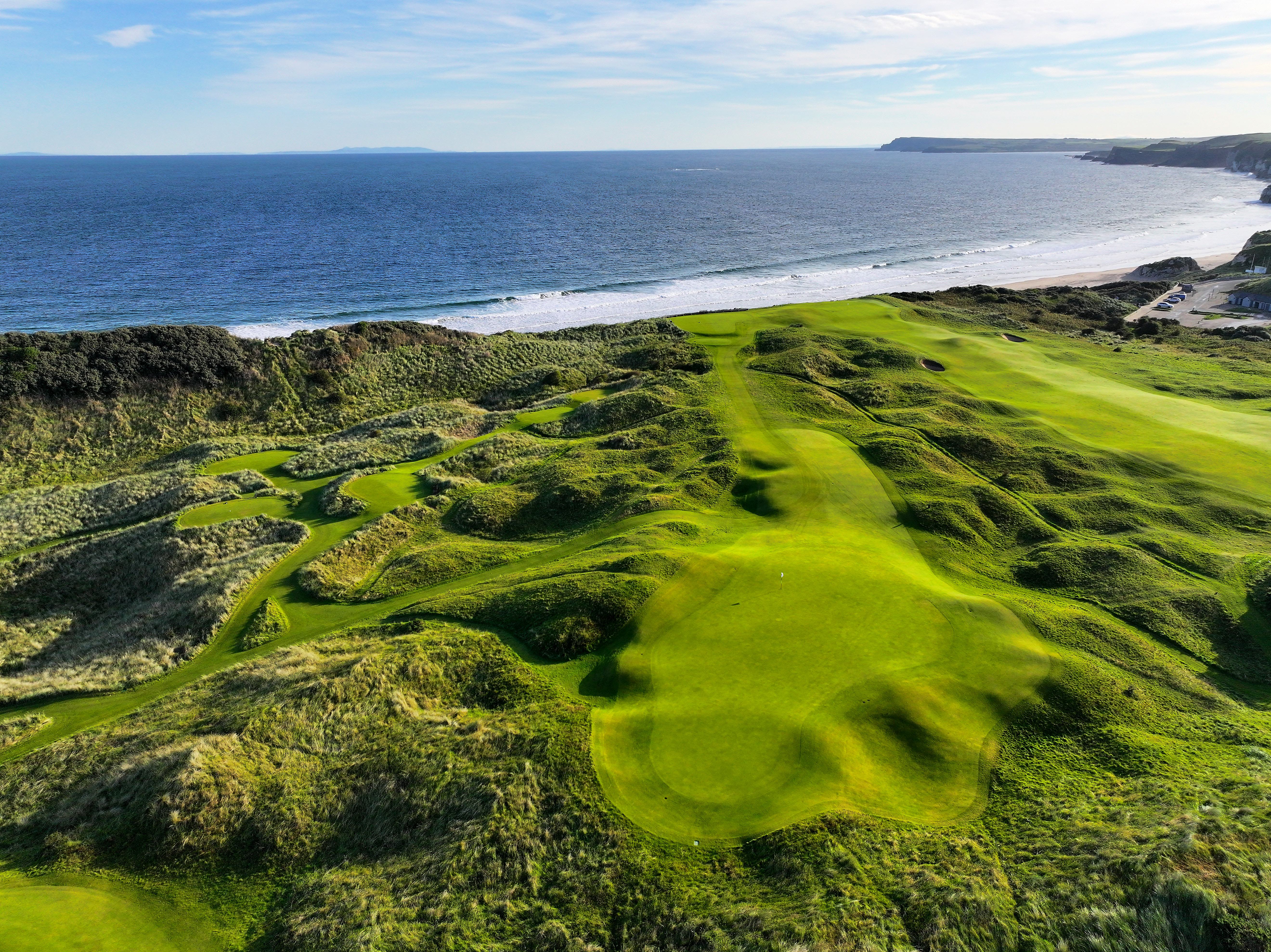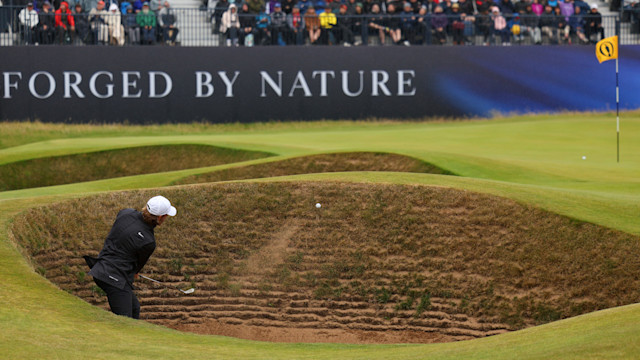Category - Major Events
Five Things to Know About the 2025 Open Championship
By Ryan Adams, PGA
Published on

Royal Portrush makes it return this year as Open Championship host.
In the mid-1800s, golf's biggest name was Scotsman Allan Robertson, then regarded as the undisputed best player. There weren't many who could beat Robertson, but when he passed away in 1859, his fellow professionals - who at the time made a living off bets, caddying, instruction and ball and club making - had a conundrum to solve.
With no Robertson, who then would be the Champion Golfer of each year?
Thus in 1860, over 3 rounds on the ancient links of Prestwick Golf Club in Scotland, The Open Championship was born.
It's been one of golf's most treasured traditions, The Open, and it's latest rendition this week visits Royal Portrush Golf Club on the northern tip of Northern Ireland. The club's Dunluce Links Course, like it did in 2019, will be a stout test for the world's best players, but like its 152 playings before it, The 153rd Open will be a proper test, too.
Let's get into the five things you need to know about the 2025 Open Championship.
Royal Portrush makes its (quick) return

The par-3 6th hole at Royal Portrush.
For the longest of time, The Open was only contested in Scotland. Starting at Prestwick, then visiting The Old Course at St Andrews - which has hosted the most at 30 - followed by more Scottish pearls like Musselburgh, and Muirfield. Then came the introduction of English golf to the rotation, with Royal St. George's, Royal Liverpool, Royal Lytham & St. Anne's and Royal Birkdale. More Scottish courses were added with Royal Troon and Carnoustie, filling out what golfers now know as The Open Rota.
There was something missing though: the Emerald Isle. Finally, in 1951, it would get its chance and Royal Portrush debuted with Max Faulkner winning. It'd then be almost 70 years before The Open would return in 2019, and it did with a bang as native Irish son Shane Lowry would claim the Claret Jug in an emotional victory.
Quickly now, The Open has returned to the Dunluce Links and golf fans are relishing a chance to see it once more. Portrush is a course rich with history, too. Tom Gilroy laid out 9 holes in 1888 and a year later the legendary Old Tom Morris offered advice to the club on a new 18-hole layout... before just designing the additional 9 himself.

The par-5 7th hole at Royal Portrush.
Portrush then went through another redesign by famous English architect Harry Colt in 1929. Colt moved the holes closer into the infamous dunes and along more of the coastline that players will see this week at The Open, turning it into one of the best courses in the world when it opened in 1933.
The Dunluce Links - named after the ruined castle that overlooks the course - has gone through tweaks here and there over the past century to round it into a more championship-style test but much of Colt's design is still there, especially the signature holes, No. 5 and 16.
Links golf presents a different challenge
One of the best facets of The Open is its unique courses that present a seriously different challenge than the other Major Championships do. Links golf is a unique breed of golf: wind, rain, deep pot bunkers with riveted sod faces, firm and fast turf, undulating greens, knee-high fescue - in one round, a player could experience it all.
Royal Portrush offers all of that, and more. The fairways are cut between dunes, squeezing the tee shots for players into what look like small runways. Bunkers of all sizes lurk everywhere, too, and we discussed with PGA Coach Brendon Elliott the keys players will need (and some good tips for you, too) to avoid disaster.

Nowhere is Portrush's difficulty more evident than the par-3 16th, known as Calamity Corner for good reason. It's an uphill beast with a yawning chasm to the right that's waiting to cause trouble. This'll be a key hole down the stretch at Portrush so keep an eye out for it during your coffee golf session.
A homecoming for Rory

"At the beginning of the year looking at the calendar, this is the tournament I had circled."
Same, Rory. Same. While the Masters Champion and newest member of the Grand Slam club probably had the week in Augusta circled, too, along with all the other Major Championship weeks, it be hard to blame McIlroy.
He grew up just a little over an hour south of Royal Portrush in Holywood, honing his game there before stepping onto golf's global stage. McIlroy even had Portrush's then-course record of 61 in 2005 when he was competing in the North of Ireland Amateur at age 16. It meant a lot for him to play in The Open's first return to Northern Ireland back in 2019 but a horrible start off the first tee put him in a hole he wasn't able to climb out of, much to the disappointment of so many locals rooting him on.
And while the comedown from winning the Masters and Grand Slam in April has been a bit topsy-turvy, McIlroy seems to be rounding into form just in time to put on a show at Royal Portrush. A T2 at the Scottish Open has him in a good spot and there's no one the crowds would love to see win more than Rory.
When Shane Lowry won in 2019, the celebrations went all night long. With a Rory win, they may go a month.
Northern Ireland is a golf mecca

The world-class Royal County Down.
One of the best parts of The Open visiting Northern Ireland is the spotlight it'll give to just the insanely good golf available in the north.
Royal Portrush's Dunluce is just the start. The Colt-designed Valley Course is also on property, giving Portrush a nicely-rounded 36 holes for golfers to tackle. And that's just the beginning. Near Portrush are Castlerock and Portstewart, two of Northern Ireland's true hidden gems. South of Belfast on the coastline is Ardglass, with its uniquely captivating layout on top of the cliffs along the sea. A little further south and you've got the Allan Robertson of them all: Royal County Down, arguably one of the best links golf experiences in the world.
If you're watching The Open and curious about these courses, we've assembled the ultimate guide to Northern Ireland golf to make things a little easier. Happy planning!
Birdies and bogeys, Open edition
The oldest winner of the oldest major? Well that's none other than Old Tom Morris, who won in 1867 at the age of 46. His son, Young Tom, believe it or not, was the youngest Open Champion a year later . . . Harry Vardon has the most Open Championships with six (1896, '98, '99, 1903, '11, '14), while Young Tom won the most in a row with four (1868-1872; no Championship in 1871) . . . Scotland has hosted The Open 98 times, England 52 and Northern Ireland 3 . . . the Claret Jug wasn't awarded until 1872; from 1860 until then, golfers played for the red-leather and silver-buckled Challenge Belt . . . Prestick, The Royal & Ancient Club and The Honourable Company of Edinburgh Golfers decided each would donate £10 towards the cost of a new silver trophy, which would become the Claret Jug . . it's tradition for The Open to start on the day before the third Friday in July . . . Jock Hutchison was the first American to win The Open in 1921 at St Andrews; it was his only title overseas . . . Henrik Stenson holds the total score Open Championship record of 264, while he shares the to par record with Cameron Smith at -20.


